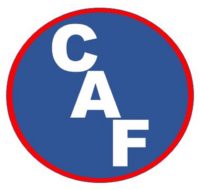NOTE: The majority of the items listed here are discussed throughout this site’s web pages. The library also contains many articles that either support or augment this information. This list is for informational purposes only and may or may not be all inclusive.
What do you need to learn about Class A Foam & CAF?
First and foremost, it is imperative that fire personnel understand how the change from drops to bubbles increases the surface exposure of the water to absorb heat so much faster. Going from water to foam (foam is bubbles) also makes the water (bubbles is water) carbon loving (sticks to ordinary combustibles – CLASS A) and reduces the surface tension (soaks in). Black smoke is incomplete combustion carbon particles that obscures visibility. In addition to instantaneous heat reduction, the foam affinity to carbon instantaneously increases interior visibility improving safety to both the firefighter and trapped victims.
Having a full understanding of the above first, let’s move on to what needs to be learned about applying Class A Foam.
BASIC FOAM PRINCIPALS:
- Understand the Reasons for Using Foam;
- Understanding Foam Terminology.
- Understanding Foam Safety of the concentrate & appication of both NAF & CAF, including exposure to the firefighter and the environment.
- The definition of foam – Water + Concentrate + Air + Agitation.
- How to make foam – Water + Concentrate + Air + Agitation.
- Concentrates – how to evaluate and how to tell what is and is not a foam concentrate, how to buy, how to use, how to store.
- Understand the AHJ and QPL in determining what concentrate meets the department’s needs.
- Foam Basics – % Solution, Viscosity, Surface Tension, Expansion.
- The differences and similarities between NAF & CAF.
- Understand the foam types – wet, fluid, dry, solution.
- Understand which foam to use for what function (suppression, protection, mop-up).
- Understand the difference between Class A & Class B foams.
- Understand what is Low X, Mid X and Hi X foam.
- Understand the effects of applied foam – visibility increase, fuel moisture increase, bubble longevity, etc.
- Understand how the bubbles result in rapid heat reduction (absorption).
MAKING FOAM:
- How to make foam – Water + Concentrate + Air + Agitation.
- Understand how NAF and CAF are made with the fire apparatus (or with the kids jar of bubbles – same thing).
- Undertstand the differences in how to make wet foam, fluid foam, dry foam, foam solution, low X, Mid X & Hi X foam – spoiler alert – they are all made the same, just the % Solution amount of air make the difference.
- Understand the use of different foam aspirating nozzles, how to adjust the foam application.
- Know all the different tactics available with foam.
PROPORTIONING FOAM – % SOLUTION:
- Understand the methods of proportioning foam concentrate with water (mathmatically and by machine).
- If using a foam proportioning machine/device – understnd the full operational capabilities and maintenance requirements of the system, as well as how to test and bypass the system.
- Understand the foam proportioning system specs and capabilities to insure adequate foam production (gpm vs % Solution) and compatibility with the type and brand of concentrate (viscosity, corrosiveness, etc.).
- Understand the definition and reasons for flushing.
CAF
With prior comprehension of both the foam basics and foam proportioniing methods and/or system, one can now start to understand the CAF System.
- Understand how the use of CAF reduces the $$ loss of fire and increases firefighter safety.
- Understand the nozzle reaction effects while applying CAF.
- Understand the make up of a CAF sytem including the 3 combined machines.
- Understand how the CAF is made in the system and what effects the hose/nozzle play on the effectivness and application of CAF.
- *Understand the need for and understand the department’s policies, procedures and guidelines affecting CLASS A FOAM & CAF.
- Understand how to do a system readiness check and identify any potential issues.
- *Identify any operational maintenance issues and procedures to follow.
- Understand How Not to Destoy the System! (Symptoms & Trouble shooting).
- Understand the name, function, limitations, hazards & maintenance requirements of all the components of the CAF System.
- Understand the periodic/annual system service as specified by the manufacturer.
- *Understand physical affects on the CAF system including elevation changes, hose hydraulics including friction loss and distance pumping with CAF.
- Understand how to start up and shut down a system.
- *Understand the operation of the CAF Auto-Sync function and how adjustments affect the output of the CAF system.
- Understand how to adjust the foam application type (wet – fluid) with a CAF System.
- Understand CAF application techniques for interior extinguishment and exterior protection.
- *Understand how to communicate between the CAF Operator and the nozzle operator to make thhe necessary adjustments for the application needed – ie. Wet CAF to Fluid CAF, or Wet or Fluid CAF to NAF (mop up), or Fluid/Wet CAF or NAF to Flush to Off.
- *Understand multple engine operations using CAF.
- *Understand water source operations using CAF (Draft or Pressure Hydrant).
Making NAF or CAF is not Rocket Science. However, it takes a lot of understanding of what the bubbles can do in different scenarios to be proficient in the use of CLASS A FOAM. Each of the above knowledge points are covered in this web site. Read, understand, then PLAY WITH IT!! Learn it!!! And by all means, if you have questions along the way – ASK!!!



























